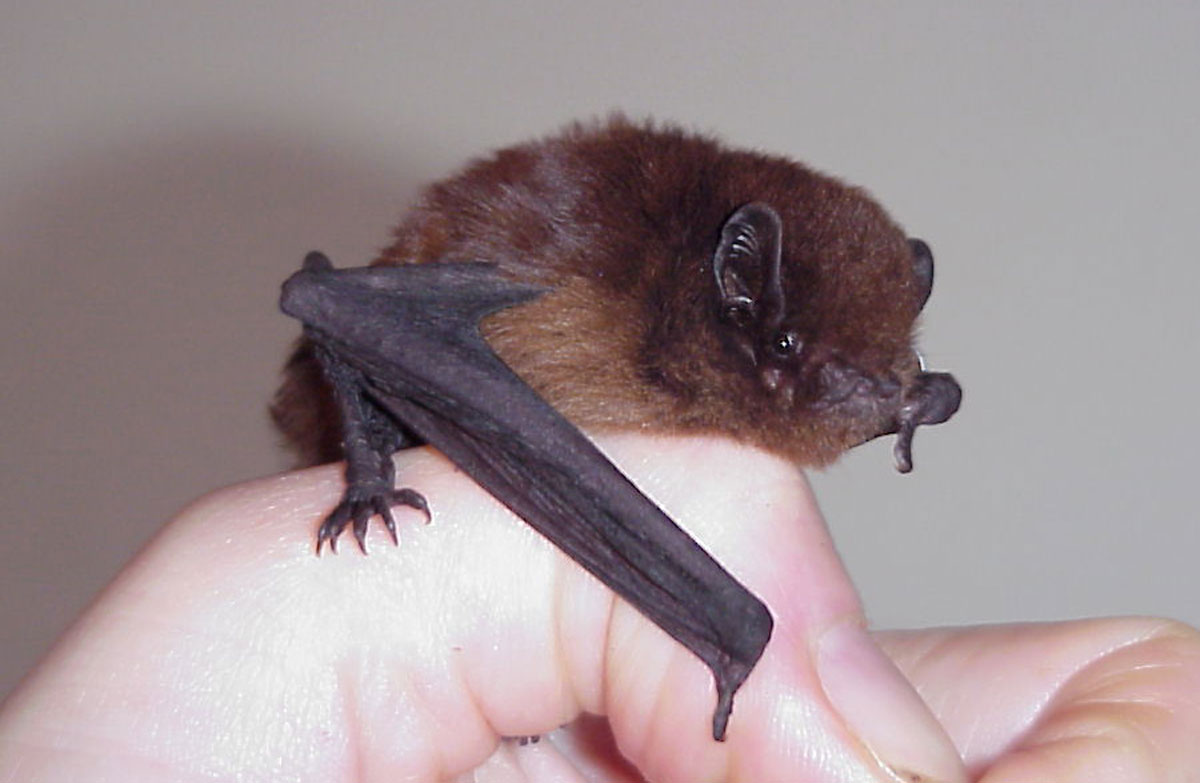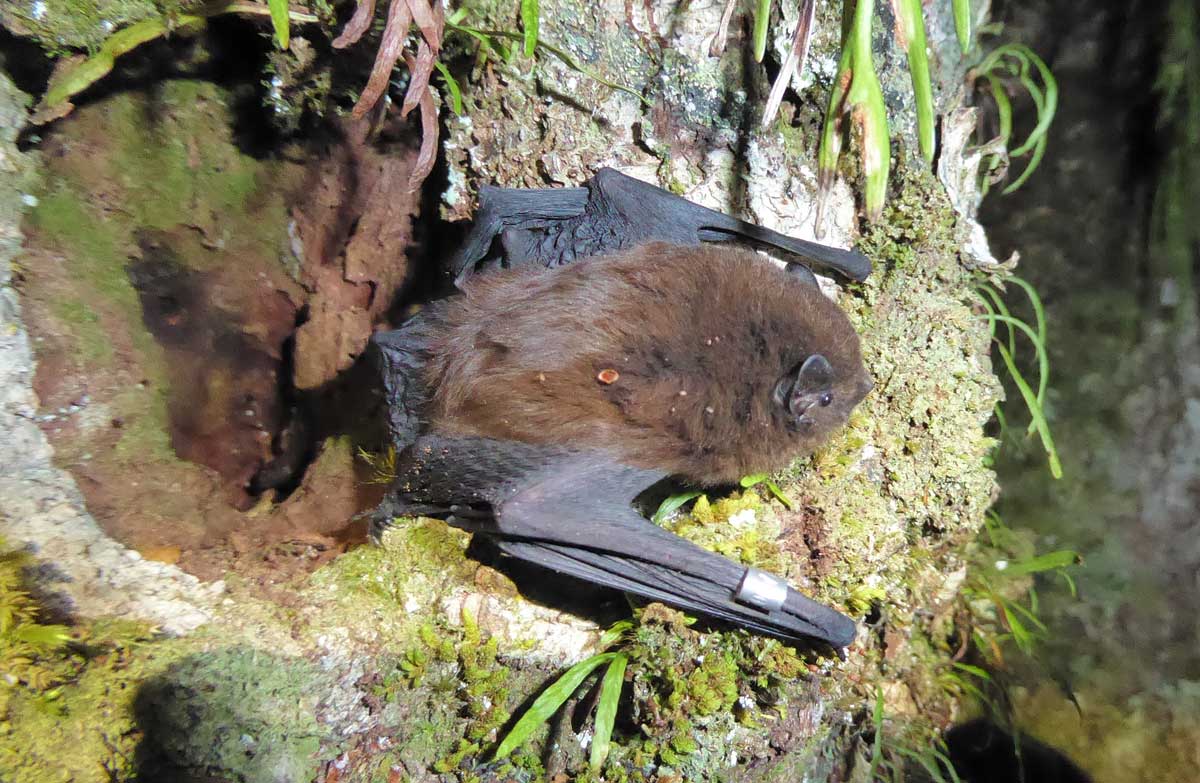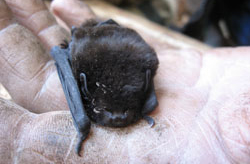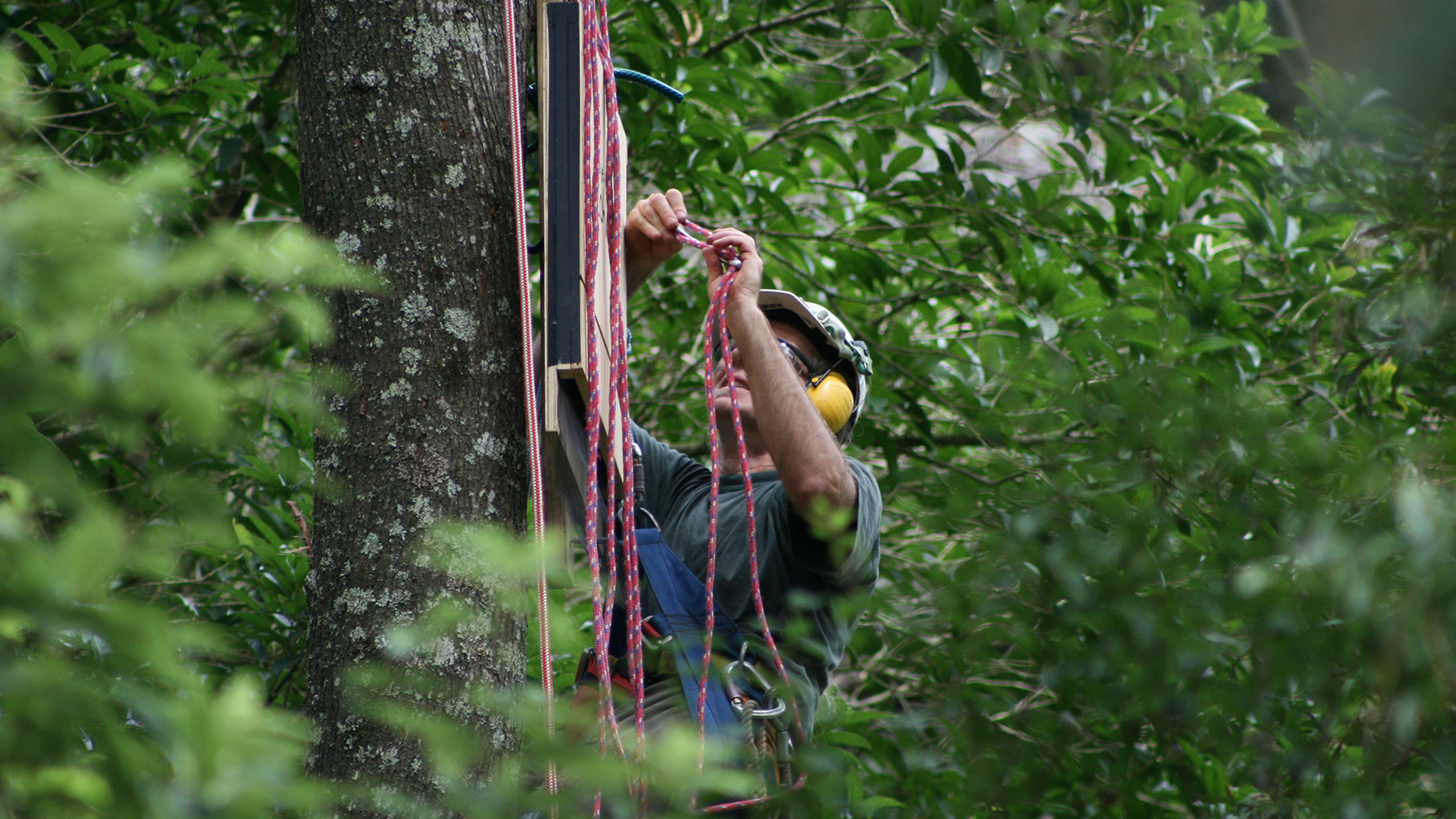Hamilton's long-tailed bats (Chalinolobus tuberculatus)
Hamilton city is one of the only cities in New Zealand to still support a resident population of long-tailed bats (Chalinolobus tuberculatus).
The long-tailed bat is unique to New Zealand, and is one of our only two remaining species of native terrestrial mammals. These bats can be found throughout New Zealand in varying habitats, but its numbers are declining due to the removal of trees (where bats roost), predation by pest mammals, and increasing competition for roost sites from rats and possums.
Long-tailed bats are capable of long distance flight. These bats may have large home ranges and regularly move between forest fragments to feed and roost. There are a few confirmed bat roosting sites in the southern part of the city, but bats are likely to be more widely distributed throughout the city than previously thought.

Source: Colin O'Donnell | Department of Conservation.

Source: Colin O'Donnell | Department of Conservation.

Source: Gerard Kelly.
Bat facts - Appearance and behaviour
Appearance
- Dark brown to black fur.
- Limbs and membranes virtually hairless.
- Small, weighing 8-14g with a wingspan of about 25cm.
Diet
- Feed on flying insects like moths, beetles, mayflies, midges and mosquitoes.
Breeding
- Breeding females give birth to one pup per year and carry juveniles during feeding flights until they reach adolescence at around 4-6 weeks.
Behaviour
- Use echolocation to identify food and other objects while flying.
- Rest by day and feed by night.
- Roost in small cavities in old or large trees, including dead trees.
- Frequently switch roosts.
- Hang upside down and hold onto roost with claws of one or both feet.
- Social animals, with sometimes between 10 to 50 bats roosting and feeding together.
- Can fly long distances and may have large home ranges.
- Regularly move between forest fragments to feed and roost.
- During the breeding season, may separate into male and female colonies.
Threats
- Habitat loss.
- Competition for roosting sites from possums and rates.
- Predation by feral cats, stoats and rats.
Protecting bat habitat on your property
Bats move to a new roost tree regularly, so are not always present at one site.
You can help by protecting standing dead trees and old-age trees with hollows and cavities, because these are the natural habitat of long-tailed bats. If you're about to remove a large or dead tree, contact the Project Echo team at Waikato Regional Council.
You could also consider planting large trees for future bat generations.
Bat distribution - map and sightings
Bat detectors
Because bats rest during the day, they are often unseen by humans. Bat detectors can be used to monitor bat sounds that can’t be heard by the human ear.
Soundclips and detector factsheet
Play the audio files, below, to hear the sounds of the bat detectors in action when a bat is nearby. The waveform graphs show what those sounds 'look like' in our equipment.
Single long-tailed bat search phase ecolocation pulse at 40Khz:

Multiple long tailed bats flying and ecolocating together:

Bat surveys and reports
-
Hamilton city bat survey 2022-2023
3 MB
-
Hamilton city bat survey 2021-2022
2.9 MB
-
Hamilton city bat survey 2020-2021
1.3 MB
-
Hamilton city bat survey 2019-2020
2.8 MB
-
Hamilton city bat survey 2018-2019
2 MB
-
Hamilton city bat survey 2017-2018
3.6 MB
-
Hamilton city bat survey 2016-2107
2.1 MB
-
Hamilton city bat survey 2011-2012
1.8 MB
-
Spatial distribution survey of long-tailed bats north of Hamilton City
1019 KB
-
Hamilton bat predictive model report
3.1 MB
Project Echo - looking after Hamilton's bats
 Project Echo is a partnership between a number of organisations, including Waikato Regional Council, Hamilton City Council, GoEco and the Riverlea Environment Society Inc. (RESI).
Project Echo is a partnership between a number of organisations, including Waikato Regional Council, Hamilton City Council, GoEco and the Riverlea Environment Society Inc. (RESI).
The project gathers information on bat distribution throughout Hamilton city, and is involved in ongoing work protecting bat roosting trees and controlling predators.
Read our factsheet and watch the video, below, for bit more information about the project.
You can also keep up-to-date with what's happening, and lots of other batty stuff, by following Project Echo's Facebook page.











To ask for help or report a problem, contact us
Tell us how we can improve the information on this page. (optional)